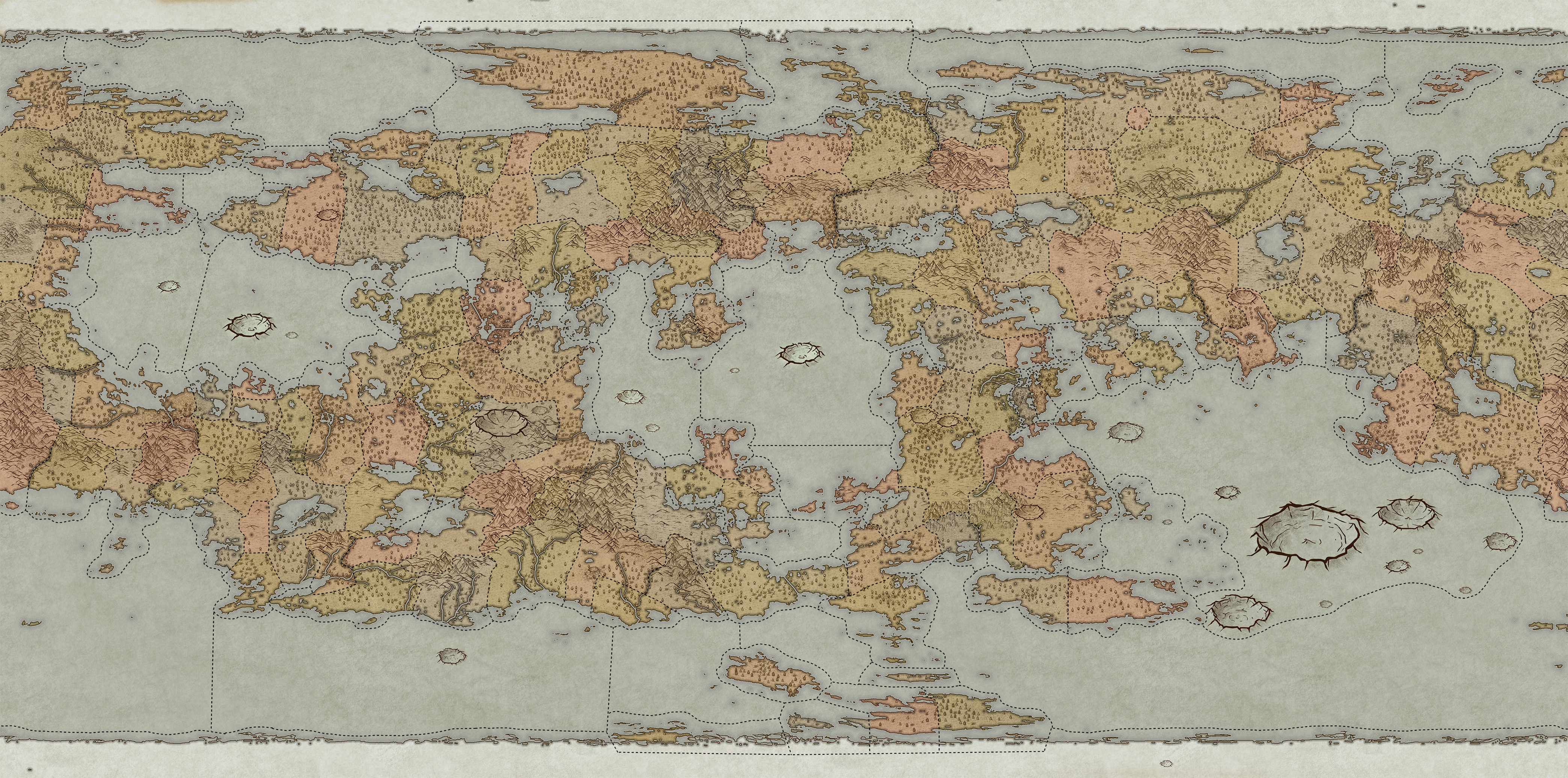Northern Icebreaker
"You see those out there, boy? Those are northern icebreakers. Gentle giants, if you give them space... they'll lead you right through the worst icefields. But get too close? You'll find your wooden hull isn't any more durable then that ice out there."The Northern Icebreaker, natively known in Weg'olw'chyen as fafhnǔh (/fafh nyh/), or "ice tooth", is a giant whale-like creature native to the icy waters of the Khtʼehh Sʼesh Ocean. They are highly regarded as both a source of food, oil, and navigation aid.
Iceberg Navigators
Biology
Northern icebreakers live a average of 40 to 50 years, with slow gestation periods and equally slow general reproductive cycles that result in one (or rarely two) calves. These hardy animals have thick, fatty hides that both insulate them from the cold and protect them from the sharp ice of their natural territories. With the thick scale-like calcifications on their back, most harpoons or even attacks from other aquatic predators are ineffective. They are equipped with large fingered flippers that help them to claw up onto ice floes like seals or walruses, and help in allowing icebreakers to slowly move across land and ice.The most notable feature of the northern icebreaker is the giant horn that protrudes from the animal's upper lip. This sturdy horn allows icebreakers to do their namesake - to smash through thick packs of ice and floe fields to navigate and maneuver. This horn is sturdy and constantly re-growing, allowing for weaker and older pieces to chip off and regrow without losing too much usability. Northern icebreakers are also known for using these horns in territorial displays against other icebreakers, or in combat against potential predators - including boats.
Northern Icebreakers are predominantly pescivores, surviving on various schools of arctic fish. They will eat other smaller animals when presented the opportunity though, and this extends to seabirds resting on the water's surface and unfortunate crewmembers who have fallen in.
Ecology
Northern icebreakers are native to the far northern stretches of the Khtʼehh Sʼesh Ocean, where icebergs and large ice fields are prevalent year round. They tend to follow the recession of ice during the summer, and are rarely seen in in waters below the most northern stretches of Draakrahlr. Their thick fat and specialized biology prevents them from handling more 'temperate' waters well.Guides & Gear
History
Northern icebreakers were first recorded by early merfolk exploring the colder reaches of the northern waters in the early part of the Second Era. They were largely ignored until humans began to use the northern stretches of the Kht'ehh S'esh Ocean for travel, during which more records of northern icebreakers began appearing. They soon became staples of northern seafaring, both as guides through ice patches and as sources of supplies.In Weg'olw'chyen and Northern Society
Northern icebreakers are a vital part of the lives of those who live far enough north to see them. They help in getting through areas that may otherwise be unnavigable, sometimes by just constantly keeping ice broken, as well as provide for much-needed resources. Most of the people who rely on them work to ensure that they do not overpull on the icebreaker populations - if they did, they know that they would lose their much-appreciated guidance and aid.As Quarry
Northern icebreakers are valuable sources of food, fat, and oil to northern ship lines and far northern settlements. Though incredibly difficult to successfully hunt, each icebreaker is worth their weight in gold. Oil is used for heating and lamps, fat used as tallow and for food purposes, and meat of course for edible resource. Their hardy bones are often used for scrimshawing and sometimes as makeshift tool parts. Their giant horns are prized resources for certain types of carving and for jewelry. Though the outside of the horn is often brittle, the core is one of the sturdiest non-mineral materials on Aanrah.
Lifespan
40-50 years
Average Weight
35 - 45 tons
Average Length
50 - 60 ft
Geographic Distribution




Comments